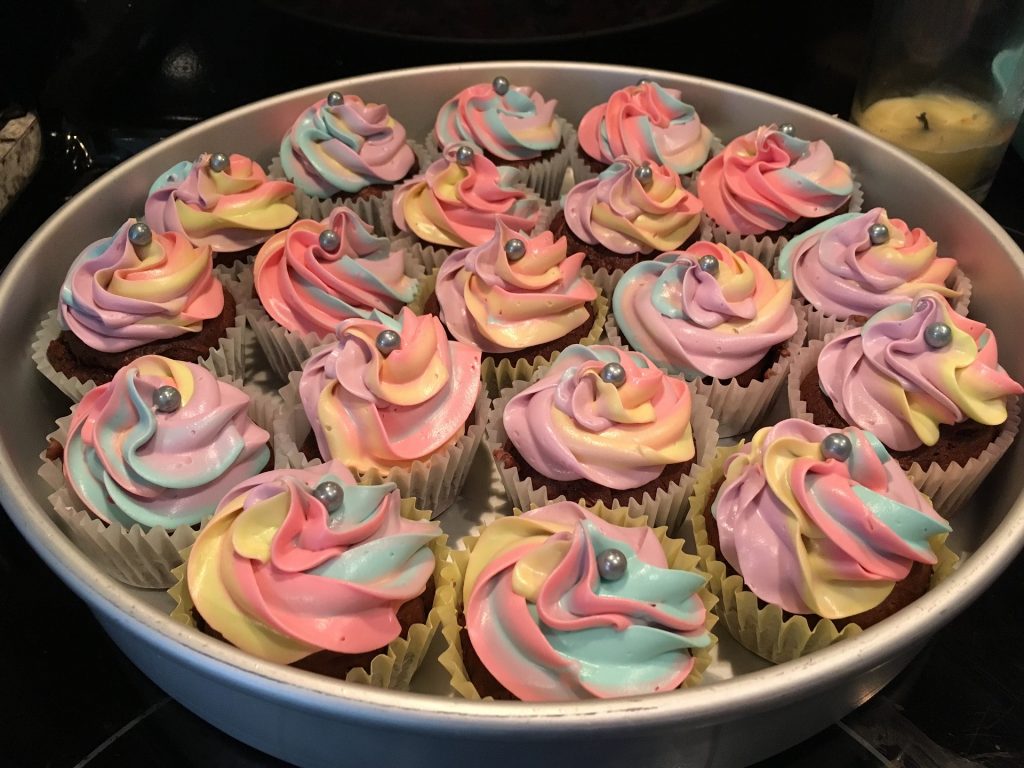Color is powerful. It can make us want to buy something and it can change our moods. In these times of Instagram and social-media sharing, color is key. If you are on the internet at all, you’ve probably come across a picture or two of rainbow bagels, unicorn frappes, and more. What’s going with this colorful food fad?
Rainbow
The first huge example of a radical color food has got to be the rainbow bagel. Made by the Bagel Shop in Brooklyn, it went viral in 2015. The demand was so huge that the store had to close for a while and make repairs to keep up. Seeing the potential for pots of gold at the end of the rainbow, other eateries started experimenting. Black Tap, the place that makes those enormous milkshakes, also embraces lots of color. Since the rainbow is also the symbol of Pride, it’s unlikely this trend will fade any time soon.
Galaxy
A lot of people are really obsessed with space, and even if you aren’t, it’s easy to see why the swirly purples, blues, and silvers of space are appealing. This galaxy trend has been popular for a while, especially on cakes, doughnuts, and other baked goods where mirror glazes add irresistible shine.
Unicorn
The unicorn food trend started with Adeline Waugh, a food stylist. While experimenting, she started mixing healthy ingredients like turmeric, freeze-dried strawberries, beet juice, and more into yogurt or cream cheese, creating brilliant swirls of pastel color. Her Unicorn Toast went viral on Instagram, and soon it got a lot of copycats, many which were not so healthy. Starbucks even released a Unicorn Frappe in 2017 with pink and sour blue powder, mango syrup, and tons of sugar.

Unicorn-inspired cupcakes
Mermaid
We have Adeline Waugh to thank again for mermaid food, specifically, mermaid toast. She used the same techniques for unicorn toast, just with more mermaid-inspired colors like chlorophyll drops for the green and spirulina powder for blue. You can find a lot of mermaid-inspired cake and smoothie pictures on Instagram these days.
Why do people love the colorful food fad?
Most of these really colorful foods don’t actually taste different than their normal counterparts. So, why are they such a big deal? Color has a huge impact on how we perceive food. Studies show that people consistently associate certain colors with certain flavors. We think the color red means sweet; blue can make us nervous, because we associate it with poison; and yellow means excitement. Lots of bright colors, which mimic the hues of healthy fruits and vegetables, intrigue the human mind. This could partially explain our draw to foods like rainbow bagels and unicorn toast – we subconsciously they’re healthy.
At least one psychologist thinks the colorful food fad also helps make us happy. Rachael Goren-Watts sees colorful foods as fun, and being able to integrate “fantasy and play” into our eating habits is a good thing. While a lot of colorful foods aren’t especially nutritious, they can help lift someone’s angry or sad mood. In these dark times, we need to find pleasure and happiness wherever we can find it, and if it’s in foods in every color of the rainbow, so be it.
———-
Colors aren’t only a fascinating aspect of human psychology, they can also be political. Click here to read about how a feud between two artists highlights questions about color, art, and accessibility.




